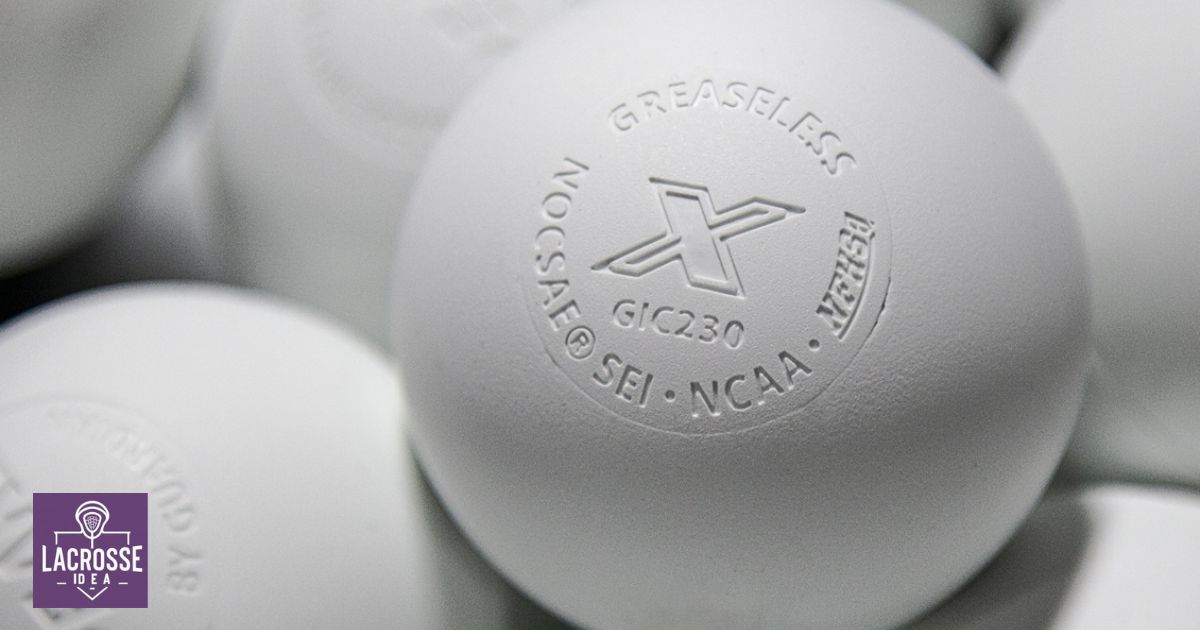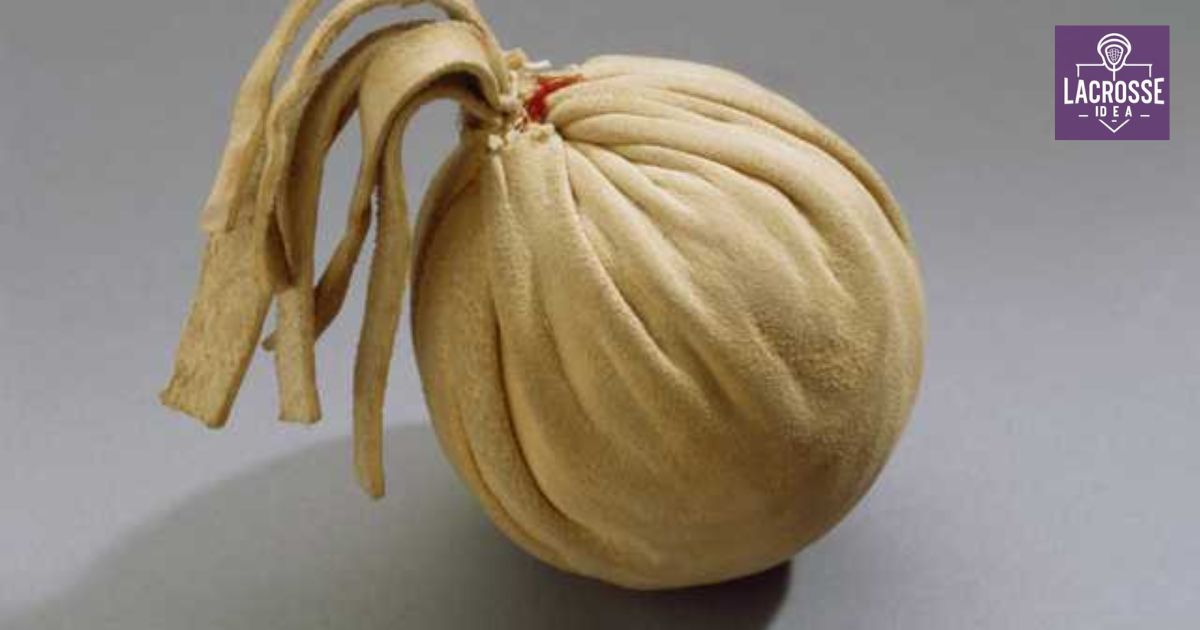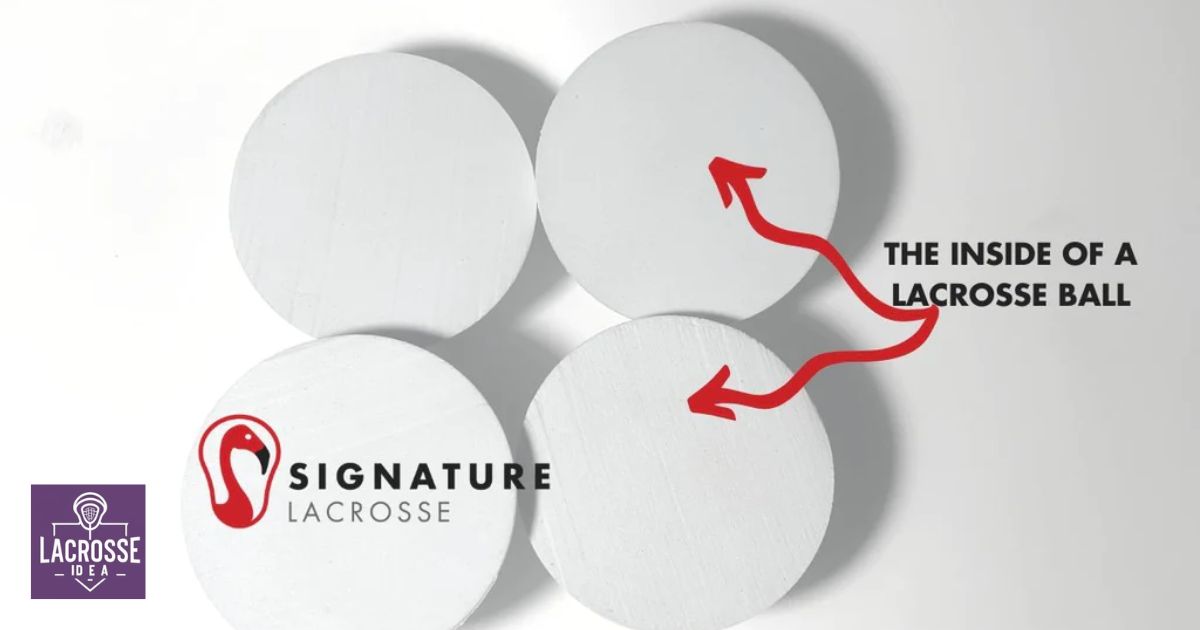Lacrosse, a dynamic and captivating sport, has a rich history that stretches back centuries. To truly grasp its origins, we must delve into the fascinating story of lacrosse balls. Like a thread that weaves together the tapestry of this game, these small spheres have evolved over time. From their humble beginnings, crafted from natural materials by Native Americans, to the standardized balls used in modern-day NCAA competitions, this article explores the journey of lacrosse balls and the materials that shaped them.
Key Takeaways
- Lacrosse balls were originally made from natural materials such as animal bladders or carved wood.
- Traditional Native American lacrosse balls were crafted from various materials found in their surroundings, including animal bladders, deerskin, wood, and carved stone.
- Europeans introduced rubber as a material for lacrosse balls, replacing the traditional materials used by Native Americans.
- The modern composition of lacrosse balls primarily consists of rubber, with standardized dimensions of 2.5 inches in diameter and 5 ounces in weight.
Origin Of Lacrosse Balls
Lacrosse balls originated from natural materials such as animal bladders or carved wood. In the early days of the sport, players would fashion their own balls using whatever materials were readily available to them. Animal bladders, commonly from deer or cows, were inflated and tied off to create a makeshift ball. These bladders provided a soft and lightweight option for gameplay.
Alternatively, some players would carve balls out of wood, shaping them into a round and smooth form. These traditional materials used for these balls highlight the resourcefulness and ingenuity of early players. However, as the sport evolved and standardized, the need for more consistent and durable balls led to the development of modern synthetic materials.
Traditional Materials Used
Traditional materials used for lacrosse balls included animal bladders or carved wood. These materials were chosen for their durability and flexibility, allowing players to pass, catch, and shoot the ball effectively. However, as the sport evolved and standardized, the materials used for lacrosse balls also changed.
Today, the most common material used for these balls is rubber. This synthetic material provides the ideal combination of hardness and bounce, allowing for optimal performance on the field. Other traditional materials used for lacrosse balls in the past include:
- Deer hide: Known for its durability and softness.
- Stone: Used by Native American tribes for a more solid and heavy ball.
- Turtle shells: Provided a unique texture and bounce.
- Plant fibers: Woven together to create a lightweight and flexible ball.
- Clay: Used in ancient times to create a solid and heavy ball.
These materials reflect the rich history and cultural significance of lacrosse, showcasing the resourcefulness and creativity of early players.
Native American Influence
The influence of Native Americans is evident in the historical development of lacrosse ball materials. Native American tribes played an integral role in the creation of lacrosse, and they were the ones who initially crafted the balls used in the game. Traditional Native American lacrosse balls were made from various natural materials found in their surroundings. These materials included animal bladders, deerskin, wood, and even carved stone.
The use of these materials not only reflected the resourcefulness of Native American tribes but also added a unique touch to the game. The Native American influence on lacrosse ball materials highlights their deep connection to the game and their profound understanding of the game’s significance. Transitioning into the next section, the arrival of Europeans would bring about significant changes to the materials used in these balls.
Europeans’ Impact On Lacrosse
With the arrival of Europeans, significant changes were introduced to the materials utilized in crafting lacrosse balls, further shaping the evolution of the game. The Europeans brought their own methods and technologies, which had a profound impact on the production of lacrosse balls. Some of the key changes include:
- Introduction of rubber: Europeans introduced rubber as a material for these balls, replacing the traditional materials used by Native Americans.
- Standardization of size and weight: Europeans established standardized dimensions for lacrosse balls, ensuring consistency across the game.
- Improved durability: European manufacturing techniques allowed for the production of more durable lacrosse balls, reducing the need for frequent replacements.
- Expansion of color options: Europeans introduced a wider range of colors for lacrosse balls, adding a visual element to the game.
- Increased availability: European trade networks facilitated the distribution of lacrosse balls, making the sport more accessible to a larger audience.
These changes brought by Europeans not only transformed the physical characteristics of lacrosse balls but also contributed to the growth and popularity of the game.
Medicinal Uses Of Lacrosse
Introduction of medicinal uses further enhanced the significance and versatility of lacrosse. Beyond its role as a sport, lacrosse has been utilized for various medicinal purposes throughout history. Indigenous peoples of North America recognized the healing properties of this ancient game and used it as a form of physical therapy and spiritual healing. The physicality of lacrosse helped improve strength, endurance, and coordination, making it an effective tool for rehabilitation.
Additionally, the communal aspect of the sport fostered a sense of belonging and social connection, contributing to overall well-being. The spiritual significance of lacrosse was also harnessed, with ceremonies and rituals incorporating the game as a means of healing and promoting harmony within communities. Today, lacrosse continues to be recognized for its therapeutic benefits, serving as a means of physical activity, stress relief, and community engagement.
Evolution Of Lacrosse Ball Materials
Lacrosse balls have undergone a significant transformation in terms of materials used throughout their evolution. From their humble beginnings as rounded stones wrapped in deerskin, lacrosse balls have evolved to become standardized rubber orbs that are used in the modern game. The evolution of lacrosse ball materials can be attributed to advancements in technology and a desire for improved performance. Here are five materials that have been used throughout the history of lacrosse balls:
- Stone: Initially, lacrosse balls were made from rounded stones, providing a natural and durable option.
- Deerskin: The stones were then wrapped in deerskin to make them easier to handle and reduce the risk of injury.
- Wood: As the game developed, wooden balls were introduced, providing a softer and more controlled playing experience.
- Rubber: In the 19th century, rubber balls became popular due to their bounce and durability, making them the standard choice for decades.
- Synthetic materials: Modern lacrosse balls are made from synthetic rubber, offering consistency, durability, and performance.
With the evolution of lacrosse ball materials, the game has become more standardized and accessible to players worldwide. Now, let’s delve into the historical timeline of lacrosse balls.
Historical Timeline
During its historical timeline, the evolution of lacrosse ball materials has played a pivotal role in shaping the game into its modern form. Lacrosse, originating from Native American cultures, initially used natural materials such as wood, animal bladders, and carved stones as balls. These materials were readily available and served their purpose in early versions of the game. However, as lacrosse gained popularity and spread to different regions, the need for standardized equipment arose.
In the late 19th century, rubber balls became the preferred choice due to their durability and consistent bounce. Today, lacrosse balls are made from solid rubber and meet specific standards set by lacrosse governing bodies. This historical timeline showcases how the evolution of lacrosse ball materials has contributed to the growth and development of the sport, providing players with a consistent and reliable playing experience.
Modern Lacrosse Ball Composition
The composition of modern lacrosse balls has evolved from natural materials to a standardized rubber construction, providing players with a reliable and consistent playing experience. The shift to rubber has brought several benefits, including increased durability and enhanced performance. Here are five key elements of the modern lacrosse ball composition:
- Rubber: The primary material used in modern lacrosse balls, providing the necessary hardness and resilience.
- Size and weight: Lacrosse balls are standardized to ensure uniformity in gameplay, with a diameter of 2.5 inches and a weight of 5 ounces.
- Color options: Lacrosse balls are typically available in various colors, allowing players to personalize their equipment or differentiate between teams.
- Gripping surface: Modern lacrosse balls feature a textured surface, providing players with better grip and control during the game.
- Safety regulations: The composition of lacrosse balls must meet specific safety standards to minimize the risk of injury to players.
With these advancements in modern lacrosse ball composition, players can enjoy a more consistent and enjoyable playing experience while still adhering to safety regulations.
Components Of A Lacrosse Ball
Rubber is the primary component that gives modern lacrosse balls their necessary hardness and resilience. This durable material allows the ball to withstand the high-velocity impacts and rough play that characterize the sport of lacrosse. The rubber used in lacrosse balls is specifically formulated to meet the required standards for weight, size, and bounce. It is carefully selected to ensure consistency in performance and durability.
In addition to rubber, lacrosse balls often contain small amounts of other materials, such as additives or colorants, to enhance their visibility or grip. However, these additional components play a minor role compared to the rubber, which remains the essential element in the construction of lacrosse balls. Players rely on these well-designed balls to perform at their best and to foster a sense of belonging and camaraderie within the lacrosse community.
NCAA Standards For Lacrosse Balls
To ensure consistent gameplay and fair competition, lacrosse balls must meet the NCAA standards, which specify the required characteristics and materials for their construction. These standards are designed to ensure that all lacrosse balls used in NCAA games meet the same quality and performance criteria. The NCAA standards for lacrosse balls include:
- Size: Lacrosse balls must have a diameter of 7.75 to 8 inches.
- Weight: The weight of a lacrosse ball must be between 5 and 5.25 ounces.
- Material: The ball must be made of solid rubber.
- Color: It must be either white, yellow, or orange.
- Bounce: The ball must have a bounce between 1.35 and 1.55 meters when dropped from a height of 6 feet.
Meeting these standards is crucial for maintaining a level playing field in lacrosse games. Now, let’s explore the next section about choosing the best material for lacrosse balls.
Choosing The Best Material
When considering the best material for lacrosse balls, it is important to evaluate factors such as durability, performance, and player safety. The material used can greatly affect the overall experience and effectiveness of the game. In order to choose the best material, let’s take a look at a comparison table of the most common materials used for lacrosse balls:
| Material | Durability | Performance | Player Safety |
|---|---|---|---|
| Rubber | High | Good | Average |
| Hard Rubber | Very High | Excellent | Excellent |
| Silicone | High | Excellent | Excellent |
| Recessed Rubber | High | Good | Good |
As seen in the table, hard rubber and silicone are the top choices for lacrosse balls due to their high durability, excellent performance, and superior player safety. These materials provide the necessary hardness and bounce required for an engaging and safe game.
With the right material selected, it’s time to move on to the next topic of training drills for lacrosse balls.
Training Drills For Lacrosse Balls
The incorporation of training drills for lacrosse balls allows players to further enhance their skills and improve their overall performance on the field. Here are some effective training drills that can help lacrosse players develop their skills and excel in the game:
- Wall ball: Players throw the ball against a wall and catch it as it rebounds, helping to improve their hand-eye coordination and passing accuracy.
- Ground ball drills: Players practice picking up the ball quickly and efficiently from the ground, simulating real-game situations.
- Shooting drills: These drills focus on improving shooting accuracy and power, allowing players to score more goals during games.
- Dodging drills: Players work on their dodging techniques to evade defenders and create scoring opportunities.
- Conditioning drills: These drills help players build endurance and stamina, ensuring they can maintain peak performance throughout the game.
The Future Of Lacrosse Ball Materials
The evolution of lacrosse ball materials holds promise for enhancing the game’s performance and durability. As technology advances, researchers and manufacturers are constantly exploring new materials and designs that can improve the properties of lacrosse balls. One area of focus is the development of materials that offer better grip and control, allowing players to have a more precise and accurate game.
Additionally, there is a growing interest in creating materials that are more resistant to wear and tear, resulting in longer-lasting balls that can withstand the demands of intense gameplay. These advancements in lacrosse ball materials not only benefit professional players but also provide opportunities for amateurs and enthusiasts to experience the game at a higher level. With continued innovation, the future of lacrosse ball materials looks promising, ensuring a more enjoyable and competitive experience for all players.
Frequently Asked Questions
How Long Have Lacrosse Balls Been Used in the Game of Lacrosse?
Lacrosse balls have been used in the game of lacrosse for several centuries. Their exact origin and adoption into the sport remain unclear, but they have become an integral part of the game’s equipment and are now made of rubber.
Are There Any Specific Regulations Regarding the Size and Weight of Lacrosse Balls?
Specific regulations regarding the size and weight of lacrosse balls are in place to ensure consistency and fairness in the game. These regulations are designed to maintain the integrity of the sport and ensure a level playing field for all participants.
What Are Some of the Most Common Injuries Associated With Using Lacrosse Balls?
Lacrosse balls can cause various injuries, such as concussions, broken bones, and contusions. These injuries result from the high speed and force of the game. Proper protective gear and adherence to safety rules are crucial in preventing such injuries.
Can Lacrosse Balls Be Customized or Personalized for Individual Players?
Lacrosse balls can indeed be customized or personalized for individual players. This allows players to have balls that meet their specific preferences in terms of color, design, and even texture, enhancing their overall playing experience.
Are There Any Alternative Materials Being Considered for Future Lacrosse Ball Production?
As the sport of lacrosse continues to evolve, manufacturers are exploring alternative materials for ball production. These innovations aim to enhance performance, durability, and safety, ensuring a brighter future for the game.
Conclusion
In conclusion, the history of lacrosse balls reveals the evolution of materials used, from traditional Native American materials to modern synthetic options. The impact of different cultures and their medicinal uses of lacrosse further shaped the development of the sport. As the sport continues to grow, the future of lacrosse ball materials holds potential for further innovation and improvement. The journey of lacrosse balls reflects the resilience and adaptability of the sport and its players.









